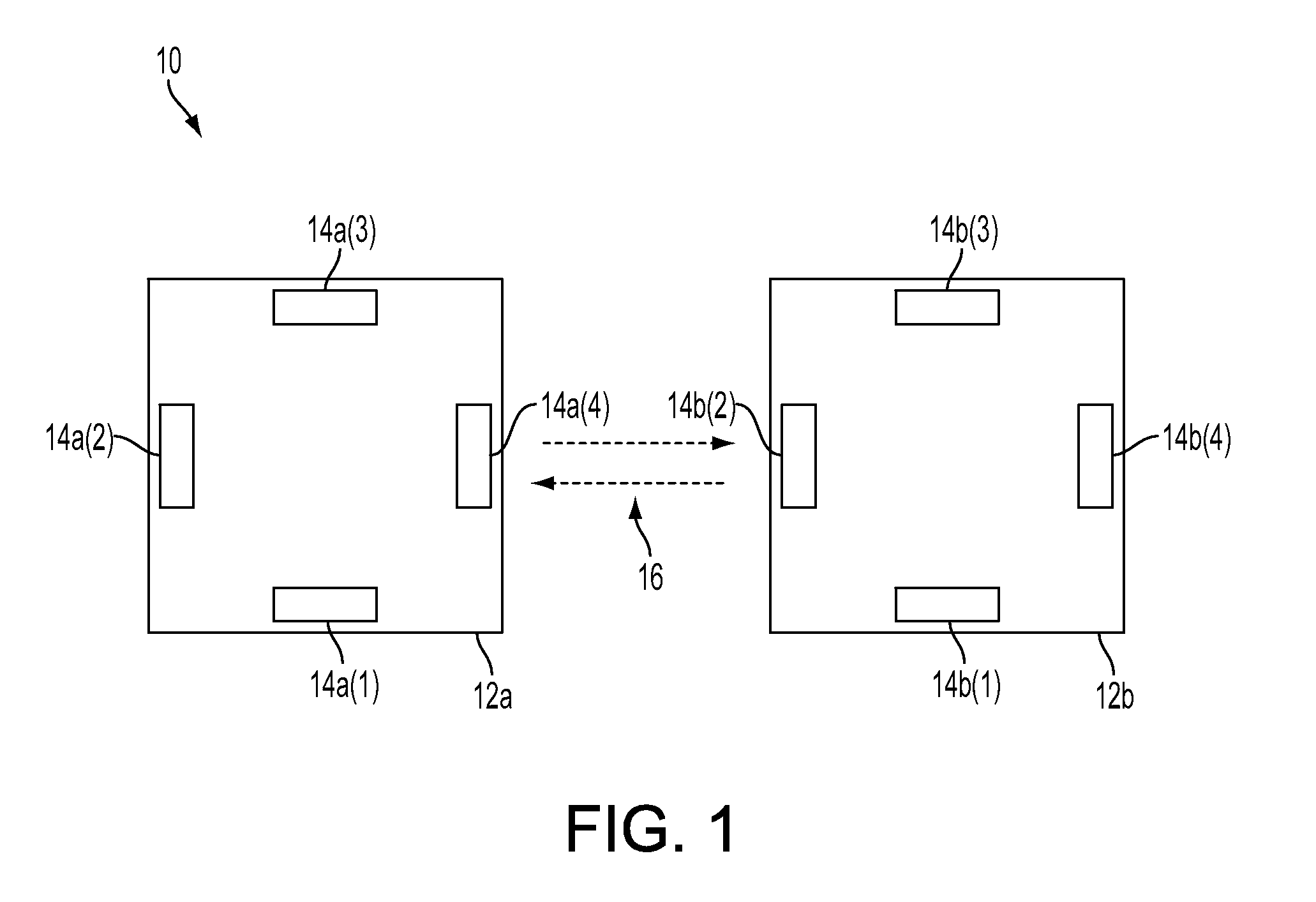Data Communication and Object Localization Using Inductive Coupling
a data communication and object technology, applied in the field of electronic devices, can solve the problems of inability to combine optical noise resistance and ability, inability to detect and detect objects, and inability to detect objects, etc., and achieve the effect of reducing the cost of operation
- Summary
- Abstract
- Description
- Claims
- Application Information
AI Technical Summary
Benefits of technology
Problems solved by technology
Method used
Image
Examples
example communication
Configuration
[0030]FIG. 2 illustrates one embodiment of a communication element 14 configuration for a transmitting sensor and receiving sensor. The configuration as illustrated may be referenced as a system 20. The system 20 is configured to include inductive coupling. In the system 20, a voltage signal 28 can be placed across an inductor 22 that can induce a voltage 26 in another nearby inductor 22, because the signal voltage 28 placed across the transmitting inductor creates a field 24 that can couple into the receiving inductor. By placing and removing an oscillating signal voltage 28 across a transmitting inductor in a pattern, messages of arbitrary data are created that can be received and interpreted by the receiving inductor. The presence or absence of a signal can be interpreted according to the specific application.
[0031]Turning to FIG. 3, it illustrates one embodiment of a communication element 14 of a physical object. In particular, the figure illustrates one embodiment ...
PUM
 Login to View More
Login to View More Abstract
Description
Claims
Application Information
 Login to View More
Login to View More - R&D
- Intellectual Property
- Life Sciences
- Materials
- Tech Scout
- Unparalleled Data Quality
- Higher Quality Content
- 60% Fewer Hallucinations
Browse by: Latest US Patents, China's latest patents, Technical Efficacy Thesaurus, Application Domain, Technology Topic, Popular Technical Reports.
© 2025 PatSnap. All rights reserved.Legal|Privacy policy|Modern Slavery Act Transparency Statement|Sitemap|About US| Contact US: help@patsnap.com



